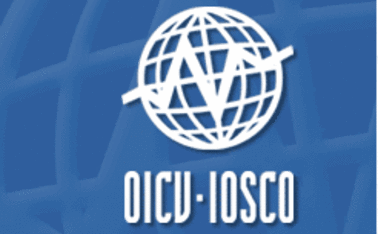IOSCO Publishes Report on the Effect of Covid Economic Support on Credit Ratings
The report, available here, contains
the review of ratings from the Big Three in a variety of categories, ranging
from structured finance ratings to sovereign ratings. IOSCO start by stating
that ‘the analysis includes a review of any changes made to the methodologies,
their application to rating actions taken during the timeframe of the pandemic,
as well as implications of the withdrawal of GSMs on credit ratings and methodologies’.
Rightly, the report follows with ‘the pandemic’s economic and market turmoil
led to many credit rating downgrades and has put credit rating agencies and
their credit ratings into greater regulatory, industry and media focus’. The
credit rating agencies, since the pandemic started, have produced more than
20,000 ratings between them, which has been identified as being proportionally higher
than the previous 3-year range. This is not surprising of course, given the
environment we inhabit at the moment, but the question is how have the agencies
responded to this unique environment?
The report found that the agencies did consider the usage of GSMs heavily, suggesting that ‘GSMs have a significant role in alleviating the downward pressure on credit ratings’. However, there were issues with regards to the transparency surrounding these ratings – as if often the case with the leading credit rating agencies – because, as the report states, ‘the review observed no material changes to CRA methodologies. However, according to CRAs, certain assumptions or stress scenarios used in assessing credit ratings were updated to reflect the change in the macro-economic outlook. CRAs explained that the methodologies are sufficiently flexible in their application to account for a variety of economic shocks and scenarios’. This may well be the case, but a. this is all on the CRAs word, without evidence, and without anything that can be measured – how are ‘assumptions’ measured? Also, can the rating agencies pre-pandemic methodologies really be so flexible to account for a global pandemic? It is questionable, and these issues are the ones continually highlighted by the critics of the rating agencies.
Ultimately, the Report concludes that the credit rating agencies
view the usage and continuation of GSMs as positive, particularly in the
developed world. However, in both the developed and developing worlds, the
process of GSMs must be reduced gradually because not doing so could be
regarded negatively by the agencies – this is particularly important for
developing countries, the credit rating agencies say. This makes sense, of
course, because the need to return to pre-pandemic economic levels needs to be
balanced with the level of GSM utilised by governments. What IOSCO do not
question is the assumptive quality of the credit ratings themselves. They do
finish by suggesting that ‘the impact of GSMs on credit ratings should continue
to be monitored through regular supervisory channels’, but that is all. Again,
the official viewpoint is that the rating agencies will be free to determine
what is material, and when. Perhaps that is not the role of the
regulators – which may well be the case – but the conclusion has to be that the
economic arena is subject to the credit rating agencies’ assumptions. This is a
vitally important understanding, and one the global regulators always need to
consider.
Keywords – credit ratings, ISOCO, @finregmatters





Comments
Post a Comment